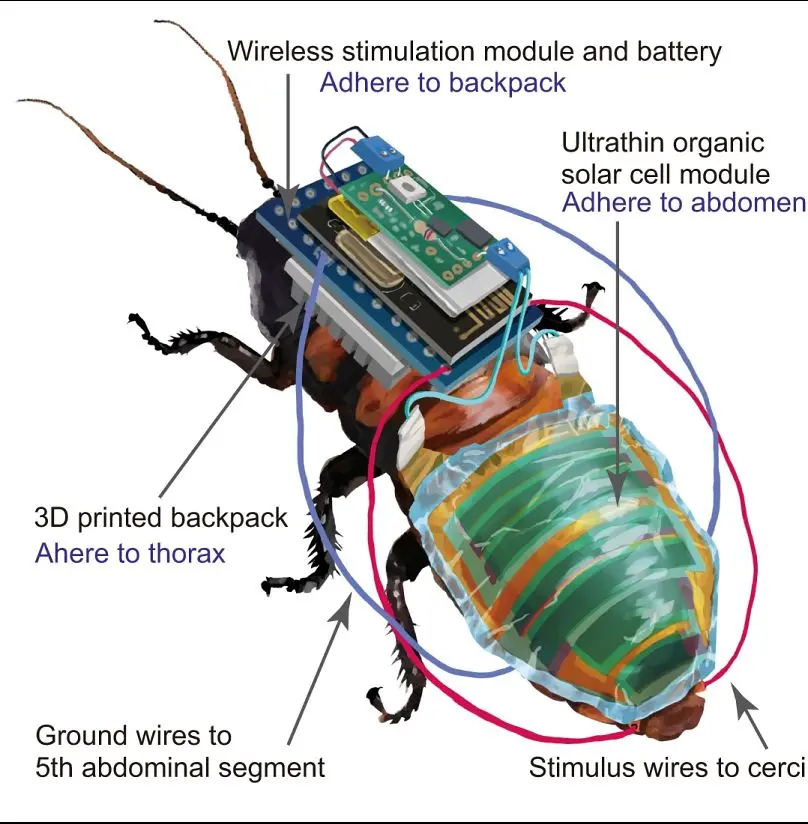
A group of researchers at RIKEN Cluster for Pioneering Research (CPR) has engineered remotely controlled cyborg cockroaches, that are equipped with a tiny wireless control module that is powered by a rechargeable battery attached to a solar cell. This design was a rechargeable, remote-controllable cyborg cockroach called Robo-bug. This new design has many mechanical devices with ultrathin electronics and flexible material, giving the insects the ability to move freely. This was a great breakthrough, and it will help make cyborg insects a practical reality.

Over the years, scientists have attempted to create part insect, part machine—cyborg insects—to assist in inspecting hazardous areas or monitoring the environment. The unique practical use of cyborg insects is their ability to be remotely controlled over a long period of time by their operators. The operators have to remotely control the leg segments of the cyborg insects, which are powered by a tiny rechargeable battery. Then keeping the cyborg insects powered is very important, and to achieve this; the researchers had to use rechargeable batteries. That is recharged by utilizing the best solution, an on-board solar cell that can continuously ensure that the battery stays charged.
This would ensure keeping the battery adequately charged. And avoiding the risk of a suddenly out-of-control team of cyborg cockroaches roaming around. Solar cells were the best solution because, while docking stations could be built to recharge the battery, time-sensitive missions could be disrupted while the battery was being recharged.
But a rechargeable, remote-controllable cyborg cockroach takes a lot to accomplish. To be successful in integrating these devices into a cockroach that has the following limitations: a small surface area, the research team had to develop a special backpack, that contained ultrathin organic solar cell modules, with an adhesion system that keeps the machinery attached for a longer duration of time while still allowing the cyborg to maintain natural movements.
The team designed a framework that was made up of a wireless leg-control module together with a lithium polymer battery that was attached to the top of the insect on the thorax using a specially designed backpack that was modeled after the body of a model cockroach. This was possible because of the team’s choice of cockroach; the Madagascar cockroach. Printing the backpack in 3D orientation out of elastic polymer made it conform perfectly to the curved surface area of the Madagascar cockroach. “This allowed the rigid electronics we attached to the design to be stably mounted on the thorax of the cockroach for more than one month,” said Kenjiro Fukuda, the team leader at RIKEN CPR.
Conclusion
This rechargeable remote-controllable cyborg cockroach is another mimic design that researchers have been able to pull off by carefully examining natural cockroach movements, and realized that the abdomen changes shape and portions of the exoskeleton overlap. The have been able successfully design a cyborg roach that run twice the distance and can output more than 50 times larger than the power output of current state-of-the art energy harvesting devices on living insects.
What do you think about using this robotic design? Does it capture your interest as a means to rescue people in the future when they are in danger? Leave us a comment in the comment section below about what you think about this future rescue bug.
Read More
- What To Expect When You’re Expecting Robots: The Future of Human-Robot Collaboration PDF Summary Review By Laura Major and Julie Shah
- The Age of AI: And Our Human Future


